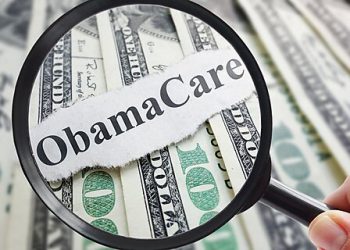A lot of different industries utilise protective workwear to keep their staff safe. Employers are obligated to provide this protective wear for their employees. It helps safeguard staff and employers as if their staff hurt themselves; employers can often find themselves facing legal or financial consequences. Protective gear for some job roles is often a legal requirement even though some people feel like `it hampers their movement or productivity.
What is Protective Workwear?
Protective workwear refers to any garments or equipment that an employee must wear to safely carry out their job role. They are designed to protect staff from hazards including airborne matter, chemicals, accident and injury, electrical, heat or biohazards. The specific items and materials are very much dependant on the job; for example, the protective wear worn by medical professionals will be completely different to those worn by construction workers. The most common items are things like harnesses, safety goggles, helmets, gloves and respiratory equipment. It also includes safety boots, trousers, or hi-vis vests that you can get from Snickers Direct. They have a huge range of different types of protective wear and accessories.
Potential Risks & Hazards
Protective workwear is worn to reduce a worker’s exposure to a number of different risks or hazards. The hazard will determine the area of the body that needs protecting as well as the materials used. For example, chemicals can be very dangerous, and so in the first instance, respirators protect people from breathing in any contaminated air. For most industries, they are used when the work area doesn’t have the proper ventilation necessary. There is also protective clothing to stop chemical agents from touching the skin. Some chemicals are irritants, and if they touch the skin, they can cause several different ailments or conditions which range in severity from a rash to skin cancer. UV rays, high temperatures and solar radiation can also cause damage to the skin. Finally, machinery can cause trauma to the skin in the form of abrasions, contusions, lacerations and friction burns.
Hazards in the workplace aren’t just to the skin; they can affect other body parts too. Eye injuries are very common within some industries, and they often occur when particles enter the eye. However, they can also occur due to blunt force injuries or chemical, thermal or biological agents. Most forms of eye protection can protect the eye from all forms of hazard found in that particular job. In addition, ears can be damaged by noise levels – especially in industrial settings such as construction or manufacturing. Earmuffs and earplugs are used to offset this risk. Lastly, injuries to the lower extremities, especially the feet and the ankles. These can include punctures, sprains, lacerations, crush injuries, trips, slips and falls. Safety boots or shoes are often worn to offset this risk; however, the flooring or ground itself can be hazardous and whilst the shoes may help, vigilance is also important.
How are these Risks Identified?
Employers are often the ones who identify these risks. This is done by carrying out regular risk assessments to determine the nature and severity of any workplace hazards or risks. To create a thorough risk assessment, consideration must be given to the workers, their level of movement, the equipment they use, and the environment they are working in. Protective wear can then be bought and assigned where it will prove the most effective protection.
Lighting and Equipment
Protective workwear isn’t the only thing that an employee needs to stay safe in the workplace. Proper lighting is vital in keeping any work environment safe. It reduces the possibility of trips and falls as well as reducing unnecessary fatigue and eyestrain. For some environments, precision lighting may be needed, and in those cases, employees should be provided with torches or headlamps. If an employee is using unsafe equipment, this can still lead to injuries despite wearing protective gear. Equipment should be tested regularly to ensure that it is safe and in proper working order.
What is an Employers Responsibility?
Employers are responsible for the safety of their staff. This means that it is their job to ensure that the working environment is safe and that all necessary risk management is carried out as well as any repairs to the building etc. They are also responsible for carrying out all maintenance checks on machinery and equipment. Lastly, they are not always responsible for providing the protective equipment, but they are obligated to provide a kit list if not and ensure that all workers are wearing the right gear. In addition, they are often required to provide employees with training on how to use the equipment properly or how to stay safe in their work environments.
In Conclusion
Wearing the proper clothing and protective workwear in the workplace is vital to your safety, and the importance of it cannot be overstated. Employers and employees need to be responsible in their approaches towards health and safety requirements to ensure that they are staying safe and compliant with regulations and legislation. If all parties maintain responsibility for themselves and their own safety, workplace risks are far less likely to result in injury or harm.















